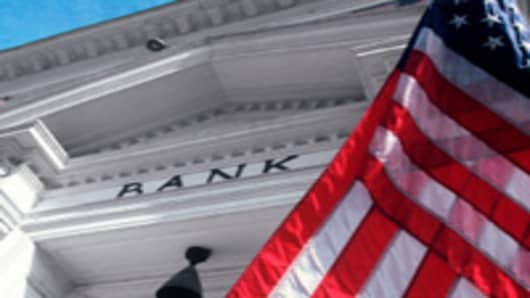The Federal Reserve, releasing details of how it conducted "stress tests" on the nation's 19-largest financial institutions, said "most banks" are currently well capitalized but need to hold a "substantial" amount above regulatory requirements in case the recession worsens.
“Most banks currently have capital levels well in excess of the amounts needed to be well capitalized," the Fed said in its eagerly awaited report.
The report said the tests are a “forward-looking exercise designed to estimate losses, revenues and reserve needs” under two different macroeconomic scenarios, including an adverse one.
According to the report, the "banks were asked to project their credit losses and revenues for two years."
The process "involves the projection of losses on loans, assets held in investment portfolios and trading-related exposures, as well as the firm's capacity to absorb losses in order to determine a sufficient capital level to support lending."
The government last week announced a two-stage disclosure process, wherein the test criteria would be outlined today and the actual test results on May 4.
Wall Street reaction to the report was muted in part because the Fed didn't indicate how many banks might need more capital.
"We really don’t have that many more details now, much more transparency now," said Michael Farr, president of Farr, Miller & Washington, and a CNBC contributor. Farr was critical of both the overall disclosure process and what was revealed today.
Industry reaction, however, was definitely positive. "We like it; we think it is consistent in terms of assumptions and application," said Scott Talbott, senior vice president of the Financial Services Roundtable. "At the same time, it doesn't give you the ability to be an armchair regulator and run the numbers on your own and create uncertainty in the market place."
"It certainly indicates a good faith effort on the regulators to get their arms around the conditions of the banks," said Mark Tenhundfeld of the American Bankers Association. "One of the things we were concerned about was that they would use a one-size-fits-all approach."
The tests are meant to see how the institution's balance sheets can hold up under a number of economic and financial circumstances, including a deterioration of the current recession. That would include the unemployment rate, which would lead to higher mortgage delinquencies and home foreclosures.
Economic Scenarios
The stress tests included two economic scenarios. In terms of the unemployment rate, the worse case was assumed to be 10.3 percent, housing prices are assumed to be 10 percent lower at the end of 2010 than the more likely baseline scenario. The baseline jobless rate averages 9.8 percent.
In terms of GDP scenarios, the stress tests assume baseline levels of minus 2.0 percent in 2009 and plus 2.1 percent in 2010.
The adverse scenario levels are negative 3.3 percent this year and growth of just 0.5 percent next year The tests also ask banks to provide projections of "resources available to absorb losses under two scenarios" over a two-year period.
"Here's the problem with those scenarios. Each of these companies operate in different markets. They are dealing with very different market conditions," said independent bank analyst Bert Ely, using the housing market as an example.
The tests also ask banks to provide projections of "resources available to absorb losses under two scenarios" over a two-year period.
James Paulsen of Wells Capital Management, for instance, was underwhelmed by the report, saying he "didn't have great expectations" going into the process.
"Investors, because of the challenges the banks have seen in recent years will, want to run those numbers on their own," said Paulson.
Politics And Banking
The tests—performed on the 19 largest financial institutions—have been something of a political hot potato for the Obama administration, since they were first announced in February as the Treasury was outlining the various parts of its financial stability plan.
There's also been widespread speculation about the banks involved, but based on assets, loan portfolios and other key measures, it would certainly include Citigroup , Bank of America , JPMorgan Chase , Wells Fargo and other big firms that have received TARP funds.
Though the administration said the tests were not "pass/fail", many in the markets say they will inevitably lead to a perception of winners and losers within the industry, with the weaker banks becoming suspect, which could depress their stock prices.
Rep. Brad Sherman (D-Calif.) called the tests "a good idea to evaluate the strength of the banks and publicize it" because "there is anxiety out there."
The tests will be used to decide which firms are under capitalized. Regulators will then ask the banks to raise private capital over the next six months. If unsuccessful, the institution will be eligible for new capital injections through the Treasury's capital access program, or CAP.
Former FDIC chairman William Isaac was critical of the process not the test themselves, saying the tests are "terribly wrong " because they were publicly announced and involve political meddling.
"I can't imagine what Treasury was thinking when it made that move. It has been causing incredible angst in the markets," said Isaac. "Bank regulation by law is supposed to be carried out by the independent banking agencies without any political interference," said Isaac.




